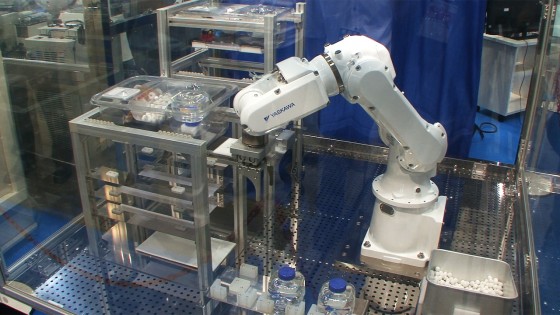
Robohub.org
Laboratory animal management robot can care for 30,000 mice

This robot is being developed to automate the management of laboratory animal colonies used by pharmaceutical companies and research institutions, primarily those that raise from 10,000 to 30,000 mice or rats. It’s currently under development by Nikkyo Technos and Yaskawa Electric.
“The biggest problem in raising animals is that diseases can spread from people to the animals. If that happens, all the animals have to be killed and replaced with new ones. So, infection by people must be prevented. By managing animals using robots in an enclosed space, it’s basically possible to eliminate the spread of diseases from animals to people or from people to animals.”
This six-axis, vertical, multi-jointed robot can mimic the motions of a human. It can change cage sheets, top up the food, and change the water. Taking out cages, changing sheets, and topping up food are each done with separate tools, which the robot picks up in turn. In this model, the amount of food remaining isn’t taken into account. But in the next model, a camera will be used to see how much food is left, so the robot can add the right amount.
“Mice, especially, are nervous animals, so the robot handles the cages gently. These tasks account for about 80% of the work involved with lab animals. So, our aim is to automate the hard, dirty, and dangerous task of dealing with so much dust and droppings.”
This robot can also work in coordination with a robot that carries cages from the rack to the workbench, and a monitoring system for the animal facility. In this way, it can automate all aspects of animal raising, from surveillance to care.
“The animals can be monitored with cameras 24/7. So, people can check their own cages from the monitoring station. The animals’ body temperature can also be managed. It takes about two hours for the cages to come back from the lab, but data can be viewed directly from a PC in the monitoring room. So, people can see the cages they want right away, wherever they are.”
“Doing this work with robots makes it much faster, so lots of cages can be handled in a short time. Also, using cameras to monitor food and water is safer and more reliable than having people do it. We’d like to complete the system this year, and next year, we’d like to produce several sets, so we can make at least a provisional start.”
tags: c-Industrial-Automation, Manipulation




